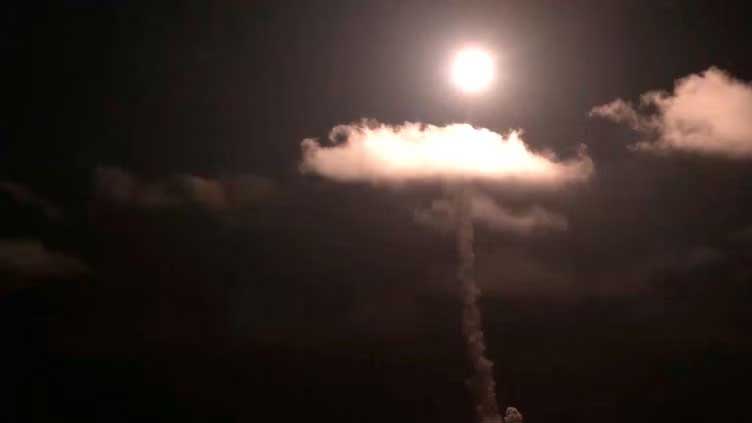Russian nuclear submarine test launches Bulava intercontinental missile

World
Russian nuclear submarine test launches Bulava intercontinental missile
MOSCOW (Reuters) - Russia's new strategic nuclear submarine, the Imperator Alexander III, has successfully tested a Bulava intercontinental ballistic missile, the Russian defence ministry said on Sunday.
The missile, which the Federation of American Scientists says is designed to carry up to six nuclear warheads, was launched from an underwater position in the White Sea off Russia's northern coast and hit a target thousands of kilometres away on the Kamchatka peninsula in the Russian Far East, the defence ministry said.
"Firing a ballistic missile is the final element of state tests, after which a decision will be made to accept the cruiser into the Navy," a ministry statement said.
The Imperator Alexander III is the seventh of the Russian Project 955 Borei (Arctic Wind) class nuclear submarines and the fourth of the modernised Borei-A variant, according to Russian sources.
They are known in NATO as the Dolgoruky class of submarines, after the first boat - the Yuri Dolgoruky - became the first new generation of nuclear submarine launched by Russia since the Cold War.
The Borei class submarine is armed with 16 Bulava missiles. The 12-metre (40-foot) missile has a range of about 8,000 km (5,000 miles).
Since rising to power in 1999, President Vladimir Putin has increased military spending and sought to rebuild Russia's nuclear and conventional forces after the chaos that accompanied the 1991 fall of the Soviet Union.
The Ukraine war has triggered the worst crisis in Moscow's relations with the West since the depths the Cold War and Putin last month said he was not ready to say whether or not Russia should resume nuclear testing.


